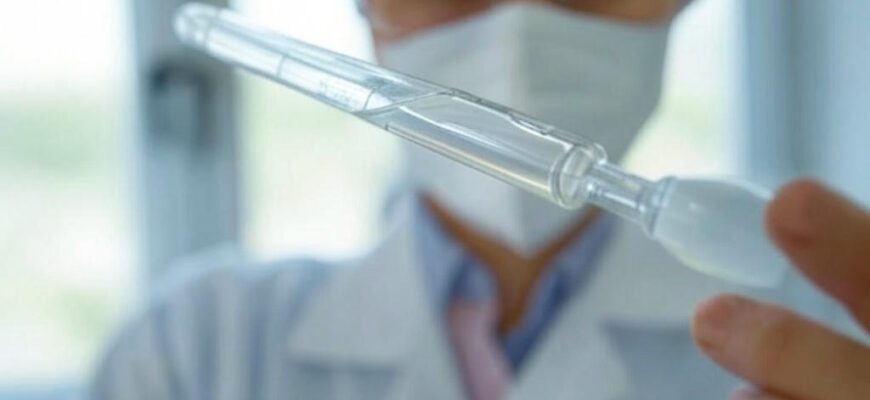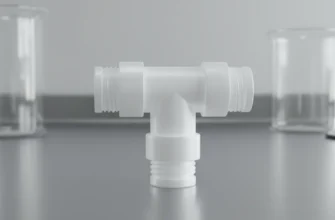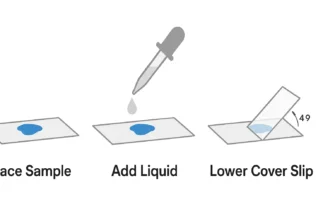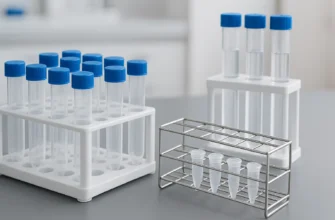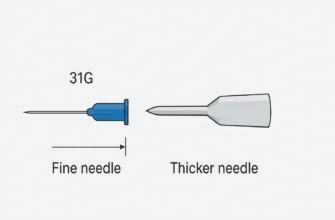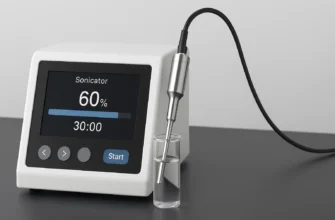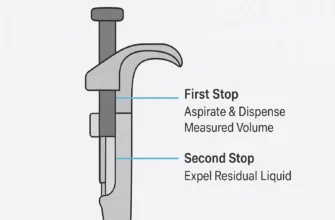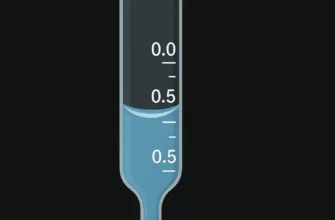Volumetric Pipettes: Ensuring Precision and Accuracy in Chemistry Lab Analysis
Precision and accuracy are the cornerstones of reliable scientific research, particularly in chemistry laboratories where exact measurements can make the difference between valid and invalid results. Among the various laboratory instruments designed for liquid measurement, volumetric pipettes stand out as essential tools that provide exceptional precision. This comprehensive guide explores how volumetric pipettes ensure accuracy in laboratory analysis and why they remain indispensable in scientific research despite technological advancements.
Understanding Volumetric Pipettes
What is a Volumetric Pipette?
A volumetric pipette is a laboratory instrument specifically designed to measure and transfer a precise volume of liquid with exceptional accuracy and precision. Unlike graduated pipettes that can measure variable volumes, volumetric pipettes are calibrated to deliver a single, fixed volume of liquid – often to the nearest hundredth or thousandth of a milliliter. These specialized instruments are the gold standard for applications requiring the highest level of measurement accuracy.
Structure and Components
Volumetric pipettes typically feature a distinctive design that enables their high precision:
- A long, narrow glass tube with a bulbous expansion in the middle
- A tapered tip at the bottom for controlled liquid delivery
- A single, precise calibration mark that indicates the exact volume
- Often made from high-quality borosilicate glass that resists chemical reactions and thermal stress
The design of volumetric pipettes has been perfected over decades to minimize measurement errors. The bulbous section provides capacity for the liquid, while the narrow tube sections make it easier to precisely align the meniscus with the calibration mark.
Working Principle of Volumetric Pipettes
The operation of volumetric pipettes follows a simple but precise mechanism:
-
A vacuum is created at the top of the pipette using a pipette bulb or pipetting aid
-
With the pipette tip immersed in the liquid, the vacuum draws the liquid past the calibration mark
-
The liquid level is carefully adjusted until the bottom of the meniscus aligns exactly with the calibration mark
-
The measured liquid is then transferred to a receiving vessel by gravity flow
An important characteristic of volumetric pipettes is that they are calibrated as “to deliver” (TD), meaning that the small amount of liquid remaining in the tip after delivery is accounted for in the calibration. Therefore, this residual liquid should not be forcibly expelled.
Accuracy and Precision: The Hallmarks of Volumetric Pipettes
Superior Measurement Capabilities
Volumetric pipettes are renowned for their exceptional accuracy and precision in laboratory settings. Class A volumetric pipettes, which adhere to stringent international standards, have been considered the cream of the crop for more than 50 years. Even with the development of modern micropipettes, traditional volumetric pipettes maintain their reputation for superior accuracy in many applications.
For example, a Class A 1 mL volumetric pipette has a tolerance of approximately 6 μL, compared to a mechanical micropipette (p1000) with a tolerance of 8 μL. This difference becomes significant in analytical procedures where every microliter matters.
Factors Contributing to Accuracy
Several design elements contribute to the superior accuracy of volumetric pipettes:
- The long, narrow neck makes it easier to precisely read the meniscus level
- The single calibration mark eliminates interpolation errors that can occur with graduated instruments
- The tapered tip ensures controlled delivery of liquid with minimal adhesion
- The standardized “to deliver” calibration accounts for liquid retention in the tip
Proper Technique for Maximum Precision
Essential Steps for Accurate Pipetting
To achieve the highest level of accuracy with volumetric pipettes, proper technique is crucial:
Conditioning the Pipette
Before measuring the actual sample, the pipette should be conditioned by rinsing its interior with the solution to be measured. This process involves:
-
Drawing a small amount of solution into the pipette
-
Rotating the pipette to coat the inner walls with the solution
-
Discarding this rinse solution
-
Repeating the process at least once more
This conditioning ensures that the inner surface of the pipette is uniformly wetted with the solution being measured, eliminating potential dilution effects.
Proper Reading of the Meniscus
The correct reading of the meniscus is critical for accuracy:
-
The pipette should be held at eye level to the calibration mark
-
The bottom of the meniscus (the curved surface of the liquid) should align precisely with the calibration mark
-
Lighting should be arranged to clearly see the meniscus
Controlled Delivery
When transferring the measured liquid:
-
The tip of the pipette should touch the wall of the receiving vessel
-
The liquid should flow out by gravity alone
-
After the main flow stops, the pipette should remain in place for a few seconds
-
Any hanging drop should be touched off to the side of the vessel
-
The small amount of liquid remaining in the tip should NOT be blown out
Volumetric Pipettes vs. Other Measurement Tools
Comparison with Mechanical Micropipettes
While modern micropipettes offer convenience and adjustability, volumetric pipettes still maintain advantages in certain situations:
| Feature | Volumetric Pipette | Mechanical Micropipette |
|---|---|---|
| Accuracy | Higher for standard volumes | Good, but slightly less accurate |
| Precision | Excellent | Very good |
| Volume Range | Fixed, single volume | Adjustable within range |
| Best For | Critical analytical work | Routine laboratory procedures |
| Tolerance (1 mL) | ~6 μL | ~8 μL |
Advantages Over Other Measurement Devices
Compared to graduated cylinders and beakers, volumetric pipettes offer several advantages:
- The narrow design creates a smaller meniscus, making it easier to read precisely
- Less liquid adheres to the sides, ensuring more complete transfer
- The standardized calibration provides higher confidence in measurement accuracy
Applications in Chemical Analysis and Research
Critical Uses in the Laboratory
Volumetric pipettes are indispensable in numerous scientific applications requiring high accuracy:
- Preparing standard solutions for calibration curves
- Diluting samples to precise concentrations
- Transferring exact volumes in quantitative analytical procedures
- Executing titrations and chemical reactions that require stoichiometric precision
Importance in Quality Control and Research
The reliability of volumetric pipettes makes them essential in:
- Pharmaceutical quality control, where drug concentrations must be precisely determined
- Environmental testing, where contaminant levels are measured at parts per million or lower
- Academic research, where reproducibility of results depends on measurement accuracy
- Industrial quality assurance, where product specifications must be consistently met
Limitations and Considerations
When to Choose Alternative Methods
Despite their advantages, volumetric pipettes are not ideal for every situation:
- Very small volumes (below 1 mL) may be better handled with micropipettes
- Highly volatile organic solvents may evaporate too quickly for accurate measurement
- Repetitive dispensing of the same volume is more efficiently done with repeating dispensers
- Viscous liquids may adhere to the glass walls, affecting accuracy
Special Considerations for Organic Solvents
When working with organic solvents, additional precautions may be necessary:
- Some solvents may interact with plastic components of pipetting aids
- Volatile solvents require quick handling to prevent evaporation
- For harsh solvents like dichloromethane (DCM) or tetrahydrofuran (THF), special pipetting techniques or positive displacement pipettes may be required
Maintenance and Calibration
To ensure continued accuracy, volumetric pipettes require proper care:
- Regular cleaning to remove any residue that might affect liquid flow
- Periodic calibration by qualified personnel
- Proper storage in vertical position to prevent damage
- Inspection for chips or cracks that could affect accuracy
- External calibration every six months is recommended for laboratories requiring the highest level of accuracy.
Conclusion
Volumetric pipettes remain the gold standard for precise liquid measurement in chemistry laboratories despite the availability of more modern alternatives. Their exceptional accuracy, reliability, and straightforward operation make them indispensable tools for applications where measurement precision directly impacts research outcomes or analytical results.
While mechanical and electronic micropipettes offer convenience for routine work, the fundamental design principles of volumetric pipettes continue to provide unmatched measurement quality for critical analytical procedures. By understanding and implementing proper technique, laboratory professionals can leverage the full potential of these precision instruments to ensure reliable and reproducible scientific results.
For any laboratory committed to quality analysis, volumetric pipettes represent an essential investment in accuracy that directly translates to research integrity and reliable scientific conclusions.

